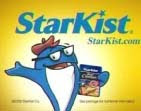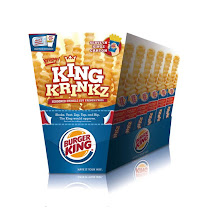
• The fragile seafood ecosystem is generating action among food retailers. Readers and subscribers to Food Business Newsletter already know that Wegmans has joined the “Take Marlin off the Menu” movement designed to get retailers and shoppers to stop eating swordfish. Now Canadian retailer The Overwaitea Food Group (OFG) has become the first major retailer to support a policy of sustainable seafood. The company has 117 stores in Western Canada, and has promised to no longer sell yellowfin tuna, Chilean sea bass, and orange roughy among other threatened species. SeaChoice is providing consulting to grocers on implementing a sustainability protocol with backing from the David Suzuki Foundation, Sierra Club British Columbia, and the Canadian Parks and Wilderness Society. The retailer recognizes that some of the fish under pressure are inexpensive and replacements will likely cost more and drive off business, but believes “doing the right thing always pays off.”
• Meat gets a bad rap. But there is another school of thought (probably financed secretly by the meat industry) that says eating meat has health benefits. It contains many important nutrients, including compounds like taurine, L-carnitine, creatine, conjugated linoleic acid (CLA) and endogenous antioxidants, according to Dr. Yeonhwa Park at the Institute of Food Technologists (IFT), a non-profit scientific group. Dr. Park says meat contains other important nutrients like iron and zinc that are hard to find or lacking in the average diet, as well as vitamin B-12. The key may be adding probiotics, fiber or omega-3 fatty acids may help improve meat's functionality as a food. Breeding and changing meat types could reduce cholesterol levels, one of the drivers in the rise of grass-fed beef. The "tough" stringiness of free range beef and its much-higher price have both limited the appeal of the concept with retailers and consumers so far. Probiotics added to fermented meats like sausage could offset the health concerns about nitrosamines, though there's skepticism it could fully counter those potential ills. In addition, the probiotic strains chosen would have to be able to overcome the salts used in their preparation. Omega-3 enriched meats could help offset the pressure on wild salmon stocks and the environmental concerns about fish farms and allegations such farms are encouraging the growth of disease and parasites in the wild varieties.
• The importance of inflammation and other conditions that previously were seen as symptoms unrelated to mortality have been changing, and the latest focus is psoriasis: people who have it suffer a 78% higher incidence of heart disease, 70% higher risk for stroke and a 98% higher incidence of peripheral arterial disease. According to a researcher, “psoriasis imposes the same level of risk as high blood lipids and smoking.”
This blog includes excerpts from a weekly round-up of food industry & food licensing news provided free to Broad Street Licensing Group's clients, and as a paid subscription service (6 months $695; 1 year $1,125). Too busy to keep up with the news wires & publications about the food business? If you or your company would like to subscribe to our news service, call Danielle Foley at Broad Street Licensing Group (tel. 973-655-0598) and ask for your free sample or click on our website.
.gif)



























